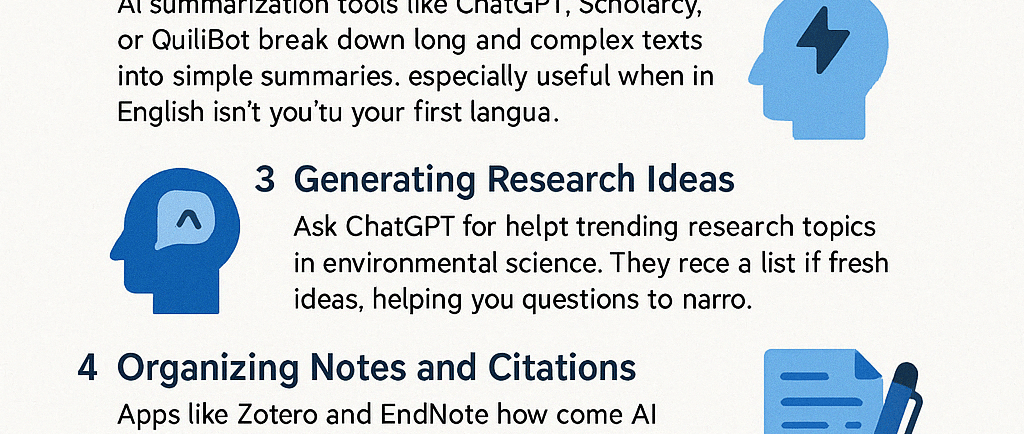How to Use AI for Research: A Guide for Students


In today’s fast-paced academic environment, students are expected to manage heavy workloads, meet tight deadlines, and still deliver quality research. Thankfully, Artificial Intelligence (AI) is making this easier. AI tools can help students research smarter—not harder. Whether you’re writing a paper, preparing a presentation, or exploring a new topic, here’s how you can use AI to boost your research skills.
1.Finding Reliable Sources Faster
AI-powered research tools like Semantic Scholar, Connected Papers, and Research Rabbit help students discover academic papers and reliable sources based on a simple keyword or a single paper. Instead of spending hours browsing through irrelevant articles, these tools give you a network of related works, saving time and improving the quality of your references.
2.Summarizing and Understanding Complex Texts
Sometimes academic papers are hard to digest. AI summarization tools like ChatGPT, Scholarcy, or QuillBot can break down long and complex texts into simple summaries. This is especially useful when you need to understand the main points quickly or when English isn’t your first language.
3.Generating Research Ideas
AI can help you brainstorm. For example, you can ask ChatGPT:
“What are some trending research topics in environmental science?”
You’ll get a list of fresh ideas, helping you choose a topic that’s both interesting and relevant. You can even go deeper by asking follow-up questions to narrow down your focus.
4.Organizing Notes and Citations
Apps like Zotero and EndNote now come with AI features to help organize research material. These tools can automatically generate citations, sort papers into categories, and help you keep your work organized. Some even suggest related articles you might’ve missed.
5.Proofreading and Improving Writing
AI writing assistants such as Grammarly or Hemingway Editor help polish your grammar, sentence structure, and style. If you’re writing an essay or report, these tools can catch mistakes, suggest clearer wording, and make your writing more academic.
6.Creating Charts and Data Analysis
If your research involves data, tools like ChatGPT with Python, Google Bard, or Excel’s AI features can help you interpret the results, generate graphs, and even explain statistical concepts. Some platforms also let you upload your data to get instant insights.
7. Avoiding Plagiarism
AI tools like Turnitin or Plagscan help ensure your work is original. They compare your writing to a vast database of sources to detect unintentional plagiarism, helping you stay within academic integrity guidelines.
Best Practices for Students Using AI
Don’t copy blindly. Use AI as a guide, not a substitute for thinking.
Verify sources. Always double-check facts and references provided by AI.
Learn from it. Use AI to understand how to improve your work, not just finish it faster.
Follow your institution’s policy. Some schools have guidelines on how AI should be used—respect them.
Final Thoughts
AI is like a superpower for student researchers. It helps you discover, learn, write, and organize more efficiently. When used wisely, it can transform the way you study and make research not just easier, but more enjoyable. So, instead of fearing AI, start using it to your advantage—and research like a pro!
